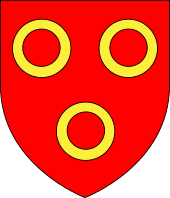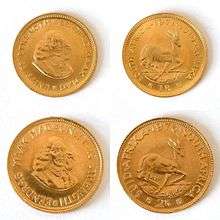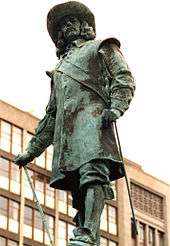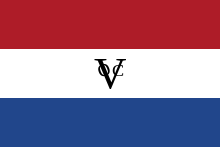Jan van Riebeeck
| Jan van Riebeeck | |
|---|---|
 | |
| 1st Commander of the Cape | |
|
In office 7 April 1652 – 6 May 1662 | |
| Succeeded by | Zacharias Wagenaer |
| Personal details | |
| Born |
Johan Anthoniszoon van Riebeeck 21 April 1619 Culemborg, Duchy of Culemborg, Holy Roman Empire |
| Died |
18 January 1677 (aged 57) Batavia, Dutch East Indies |
| Resting place | Groote Kerk, Jakarta, Indonesia |
| Nationality | Dutch |
| Spouse(s) |
Maria de la Quellerie Maria Isaacks Scipio[1] |
| Children |
Abraham van Riebeeck 7 others |
| Occupation | Colonial administrator |
| Religion | Dutch Reformed |
Johan Anthoniszoon "Jan" van Riebeeck[2] (21 April 1619 – 18 January 1677[3]) was a Dutch colonial administrator and colonizer of Cape Town.
Biography
Van Riebeeck was born in Culemborg, as the son of a surgeon. He grew up in Schiedam, where he married 19-year-old Maria de la Quellerie on 28 March 1649. She died in Malacca, now part of Malaysia, on 2 November 1664, at the age of 35. The couple had eight or nine children, most of whom did not survive infancy. Their son Abraham van Riebeeck, born at the Cape, later became Governor-General of the Dutch East Indies.
Joining the Vereenigde Oost-Indische Compagnie (VOC) (Dutch East India Company) in 1639, he served in a number of posts, including that of an assistant surgeon in the Batavia in the East Indies.
He was head of the VOC trading post in Tonkin, Indochina.
In 1643, Riebeeck travelled with Jan van Elseracq to the VOC outpost at Dejima in Japan. Seven years later in 1650, he proposed selling hides of South African wild animals to Japan.[4]
In 1651 he volunteered to undertake the command of the initial Dutch settlement in the future South Africa. He landed three ships (Dromedaris; Reijger and Goede Hoop) at the future Cape Town on 6 April 1652 and fortified the site as a way-station for the VOC trade route between the Netherlands and the East Indies. The primary purpose of this way-station was to provide fresh provisions for the VOC fleets sailing between the Dutch Republic and Batavia, as deaths en route were very high. The Walvisch and the Oliphant arrived later in 1652, having had 130 burials at sea.

Van Riebeeck was Commander of the Cape from 1652 to 1662; he was charged with building a fort, with improving the natural anchorage at Table Bay, planting cereals, fruit and vegetables and obtaining livestock from the indigenous Khoi people. In the Kirstenbosch National Botanical Garden in Cape Town there are a few Wild Almond trees still surviving. The initial fort, named Fort de Goede Hoop ('Fort of Good Hope') was made of mud, clay and timber, and had four corners or bastions. This fort was replaced by the Castle of Good Hope, built between 1666 and 1679 after van Riebeeck had left the Cape.
Van Riebeeck was joined at the Cape by a fellow Culemborger Roelof de Man (1634-1663) who arrived in January 1654 on board the ship Naerden. Roelof came as the colony bookkeeper and was later promoted to second-in-charge.[5]
Van Riebeeck reported the first comet discovered from South Africa, C/1652 Y1, which was spotted on 17 December 1652.
In his time at the Cape, Van Riebeeck oversaw a sustained, systematic effort to establish an impressive range of useful plants in the novel conditions on the Cape Peninsula – in the process changing the natural environment forever. Some of these, including grapes, cereals, ground nuts, potatoes, apples and citrus, had an important and lasting influence on the societies and economies of the region. The daily diary entries kept throughout his time at the Cape (VOC policy) provided the basis for future exploration of the natural environment and its natural resources. Careful reading of his diaries indicate that some of his knowledge was learned from the indigenous peoples inhabiting the region.[6]
He died in Batavia (now renamed Jakarta) on Java in 1677.
Legacy in South Africa



Jan van Riebeeck is of cultural and historical significance to South Africa. Many of the Afrikaner population view him as the founding father of their nation. This regard was also prevalent in that his image appeared ubiquitously on stamps and the South African currency from the 1940s up until 1993 when the South African Reserve Bank changed the currency to an apolitical design of the fauna and flora of the region. The image used on the currency notes was not that of Van Riebeeck, but of Bartholomeus Vermuyden.[7][8]
6 April used to be known as Van Riebeeck's Day, and later as Founders' Day but the holiday was abolished by the ANC government after the elections of 1994. His image no longer features on any official currency or stamps, but statues of him and his wife remain in Adderley Street, Cape Town. The coat of arms of the city of Cape Town is based on the Van Riebeeck family coat of arms.
Many South African towns and villages have streets named after him. Riebeek-Kasteel is one of the oldest towns in South Africa, situated 75 km from Cape Town in the Riebeek Valley together with its sister town Riebeek West.
Hoërskool Jan van Riebeeck is an Afrikaans high school in Cape Town.[9]
Notes
- ↑ van Ledden, Willem-Pieter (2005). Jan van Riebeeck tussen wal en schip: een onderzoek naar de beeldvorming over Jan van Riebeeck in Nederland en Zuid-Afrika omstreeks 1900, 1950 en 2000. Hilversum: Verloren. p. 27. ISBN 9789065508577. Retrieved 12 August 2014.
- ↑ Dutch pronunciation: [ˈjɑn vɑn ˈribeːk]; Afrikaans pronunciation: [ˈjɐn fɐn ˈribeək]
- ↑ Trotter, Alys Fane Keatinge (1903). Old cape Colony : a chronicle of her men and houses from 1652 to 1806. London : Selwyn & Blount. Retrieved 2009-07-25.
- ↑ Osada, Masako. (2002). Sanctions and Honorary Whites: Diplomatic Policies and Economic Realities in Relations Between Japan and South Africa, p. 28.
- ↑ "Tanap". tanap.net.
- ↑ S. Pooley, 'Jan van Riebeeck as Pioneering Explorer and Conservator of Natural Resources at the Cape of Good Hope (1652–62)', Environment and History 15 (2009): 3–33. doi:10.3197/096734009X404644
- 1 2 Giliomee, H and Mbenga, B.K. (2007). New History of South Africa. Tafelberg, Cape Town; ISBN 978-0-624-04359-1
- 1 2 "Paintings of the Rijksmuseum: Portret van een man, vermoedelijk Bartholomeus Vermuyden (1616/17-1650)".
- ↑ "Hoërskool Jan van Riebeeck". janvanriebeeck.co.za.
References
- Riebeeck, Jan van, and Robert Kirby. The secret letters of Jan van Riebeeck. London, England, UK: Penguin Books 1992; ISBN 978-0-14-017765-7
- Collins, Robert O. Central and South African history. Topics in world history. New York, NY, USA: M. Wiener Pub. 1990; ISBN 978-1-55876-017-2.
- Hunt, John, and Heather-Ann Campbell. Dutch South Africa: early settlers at the Cape, 1652–1708. Leicester, UK: Matador 2005; ISBN 978-1-904744-95-5.
External links
| Wikimedia Commons has media related to Jan van Riebeeck. |


